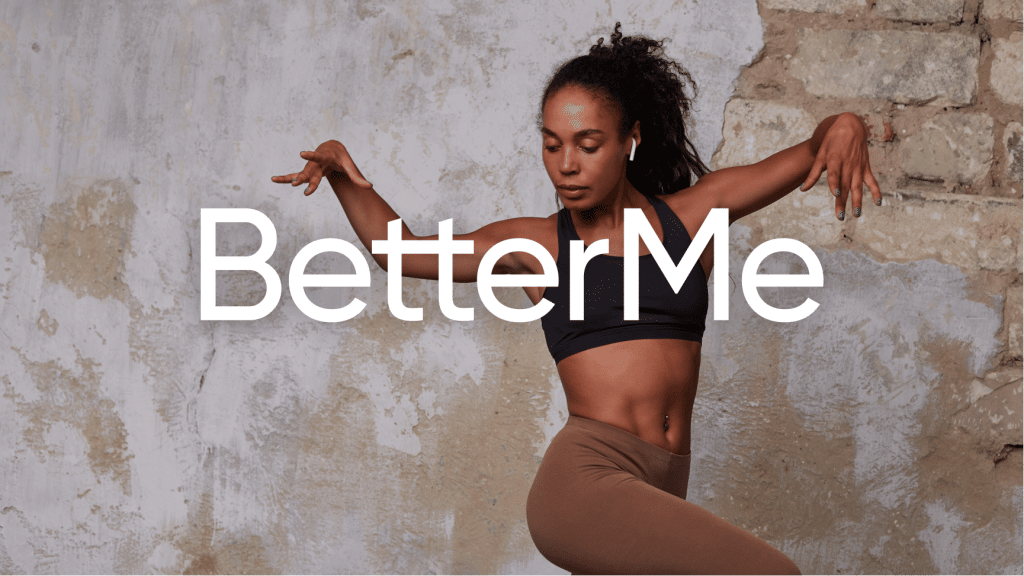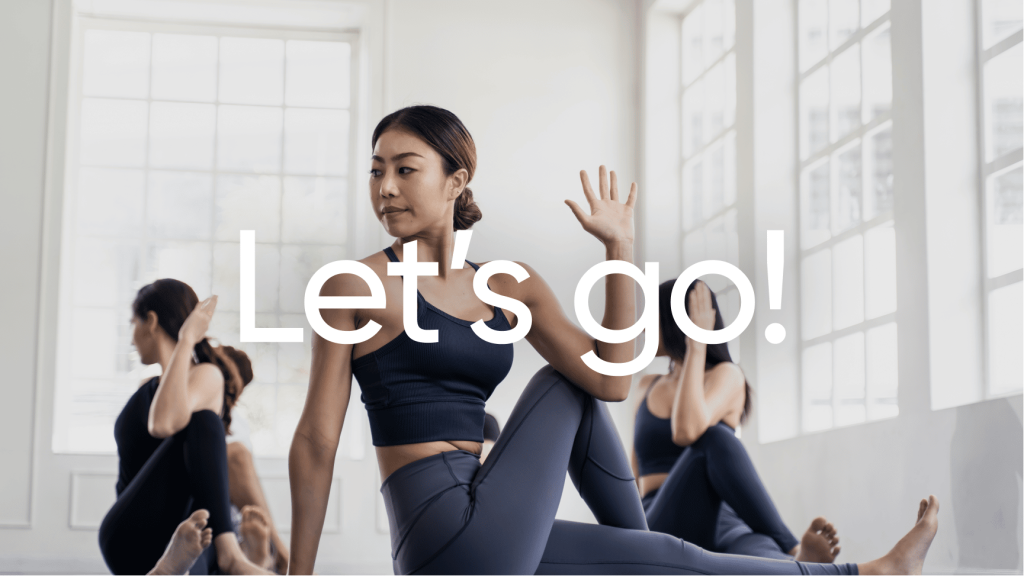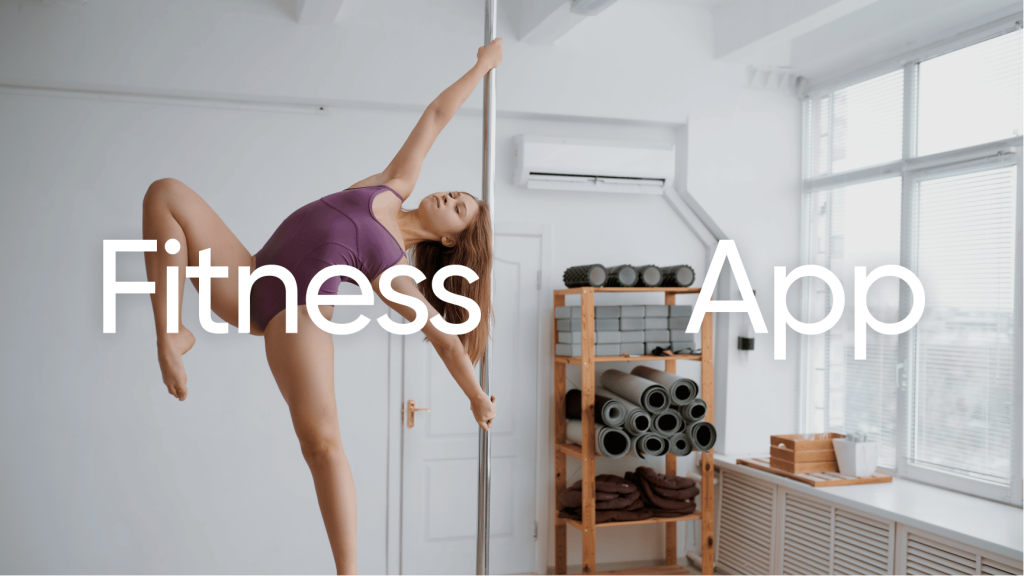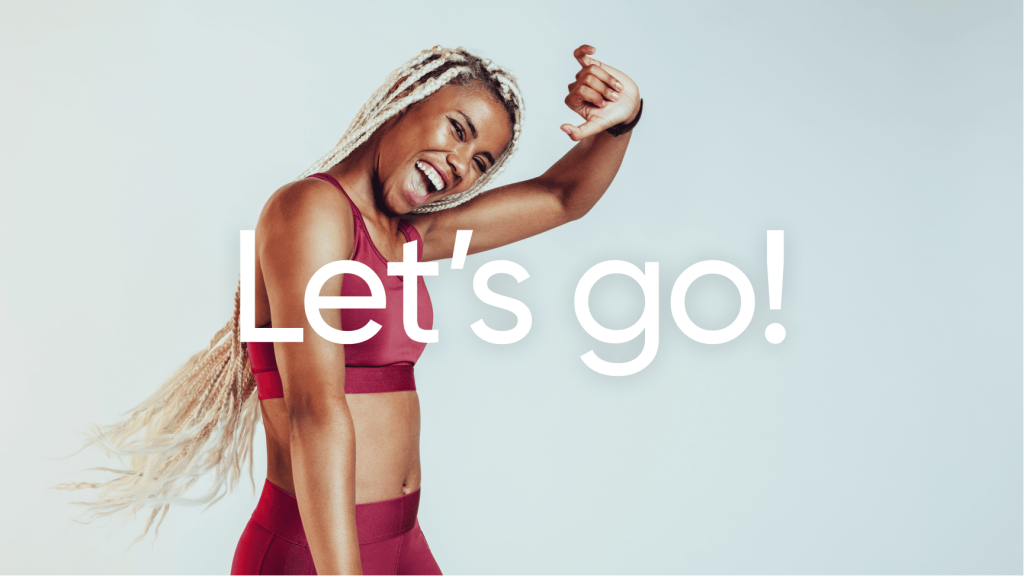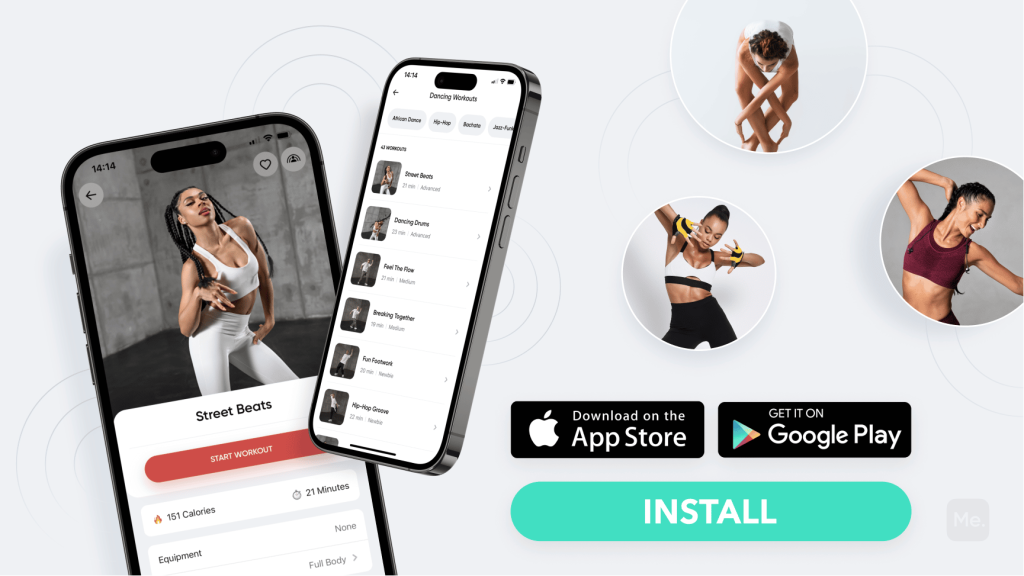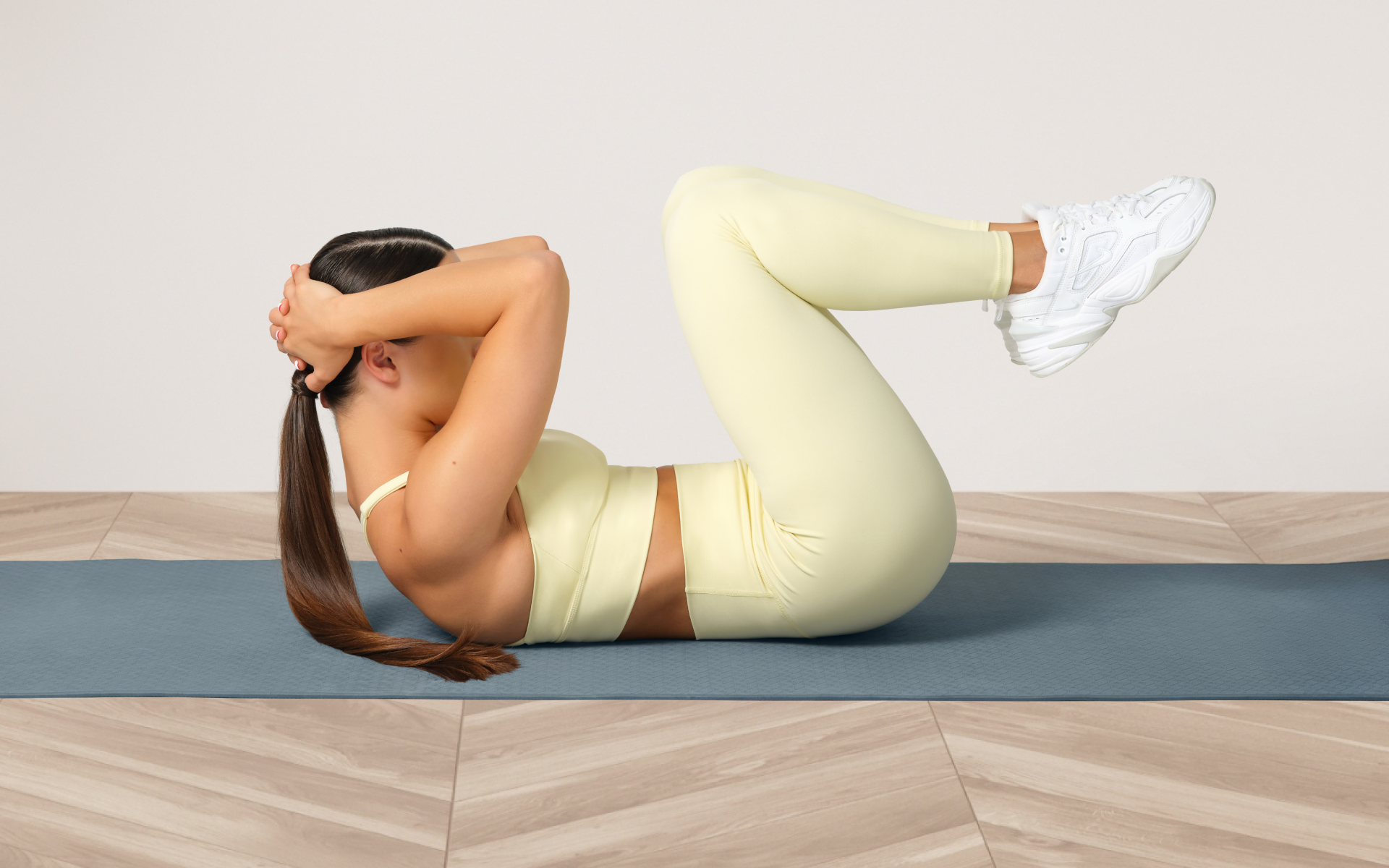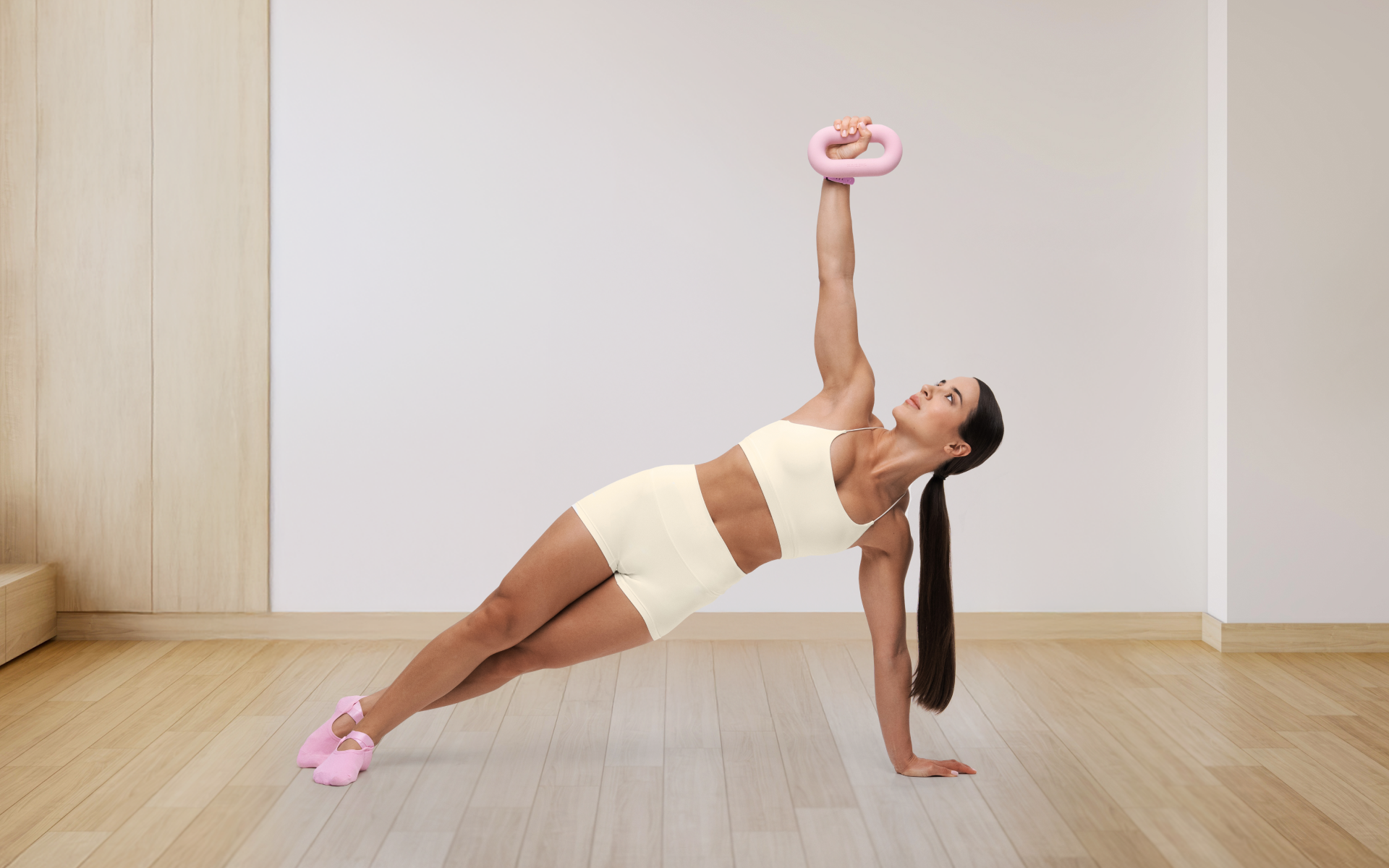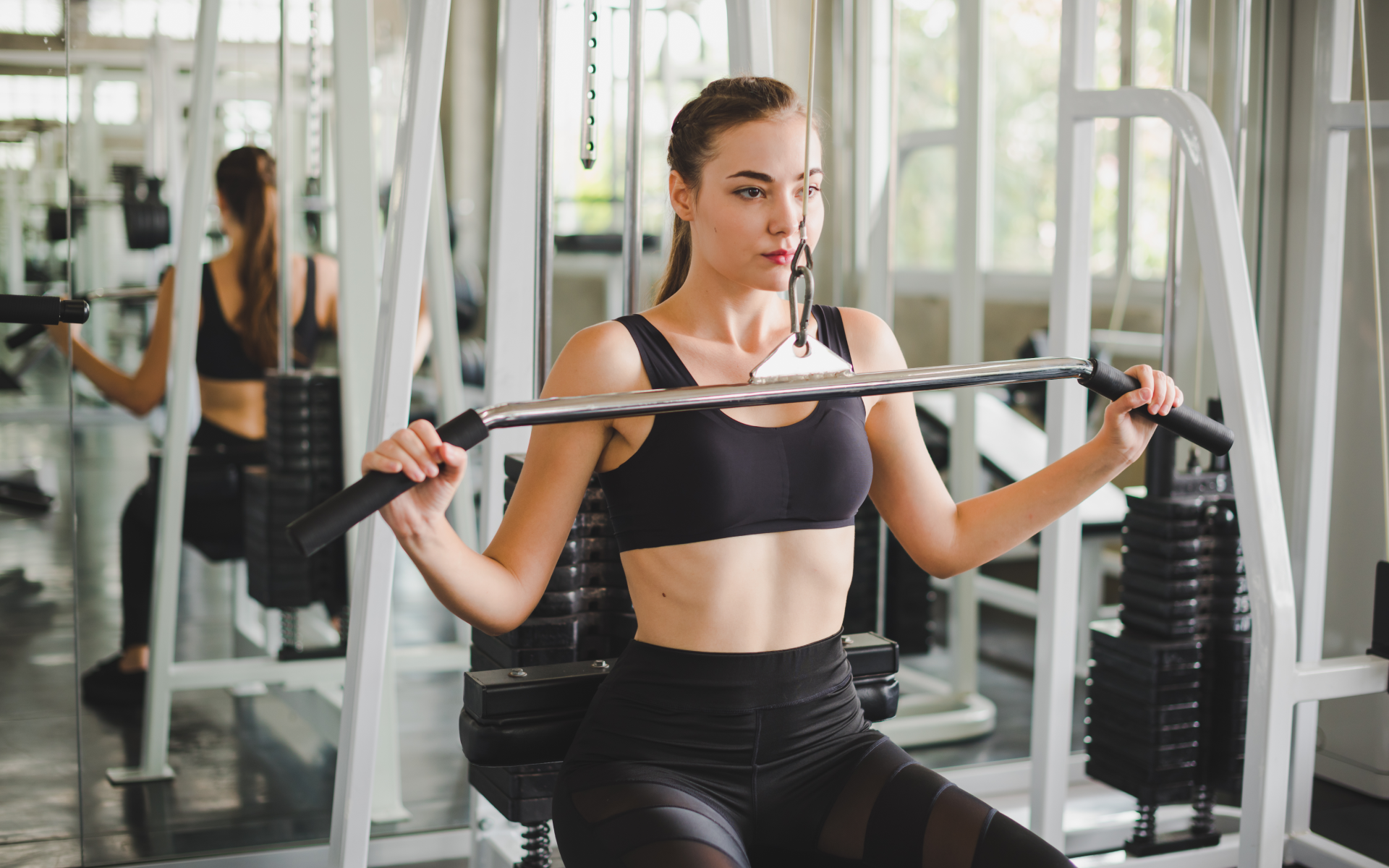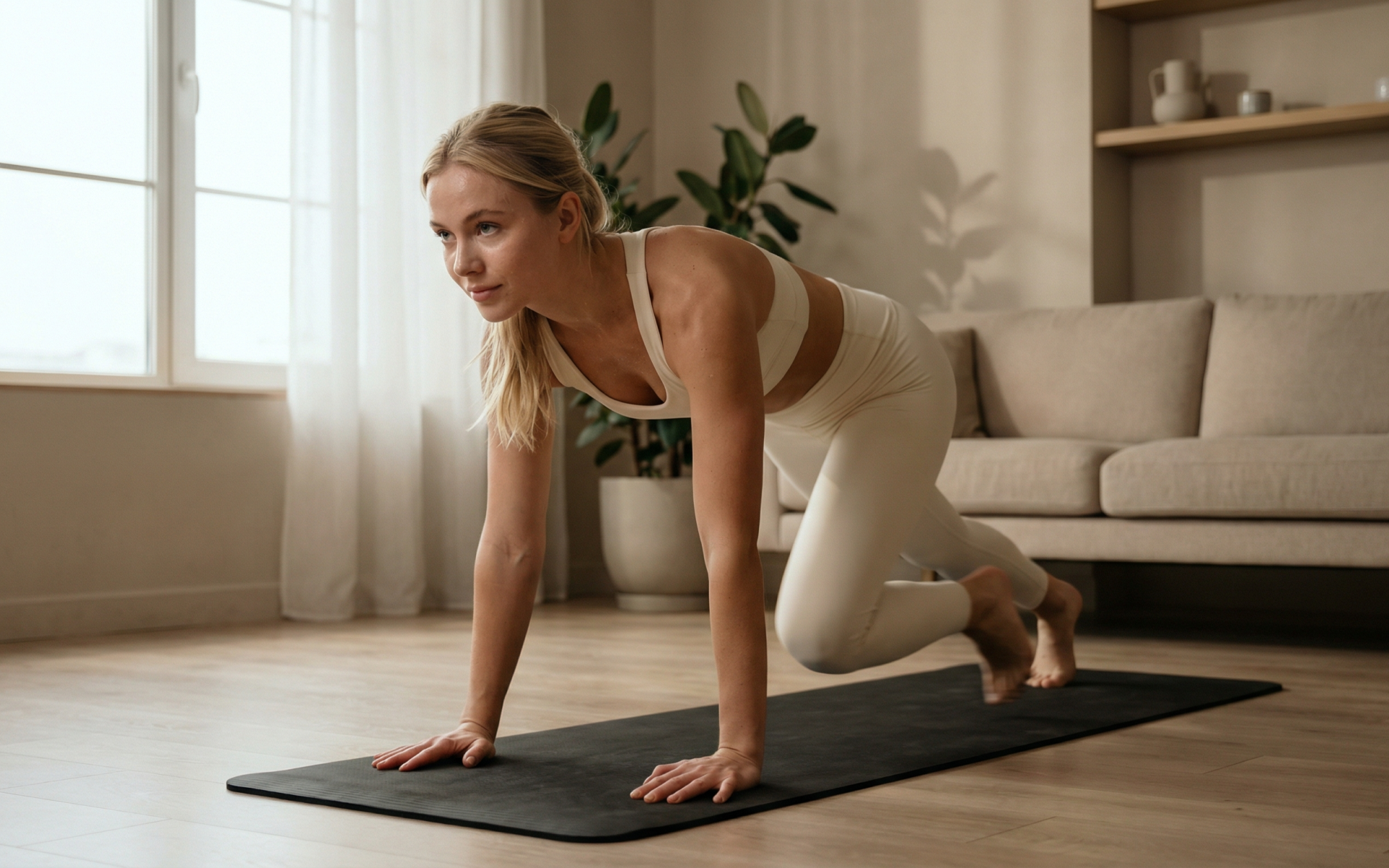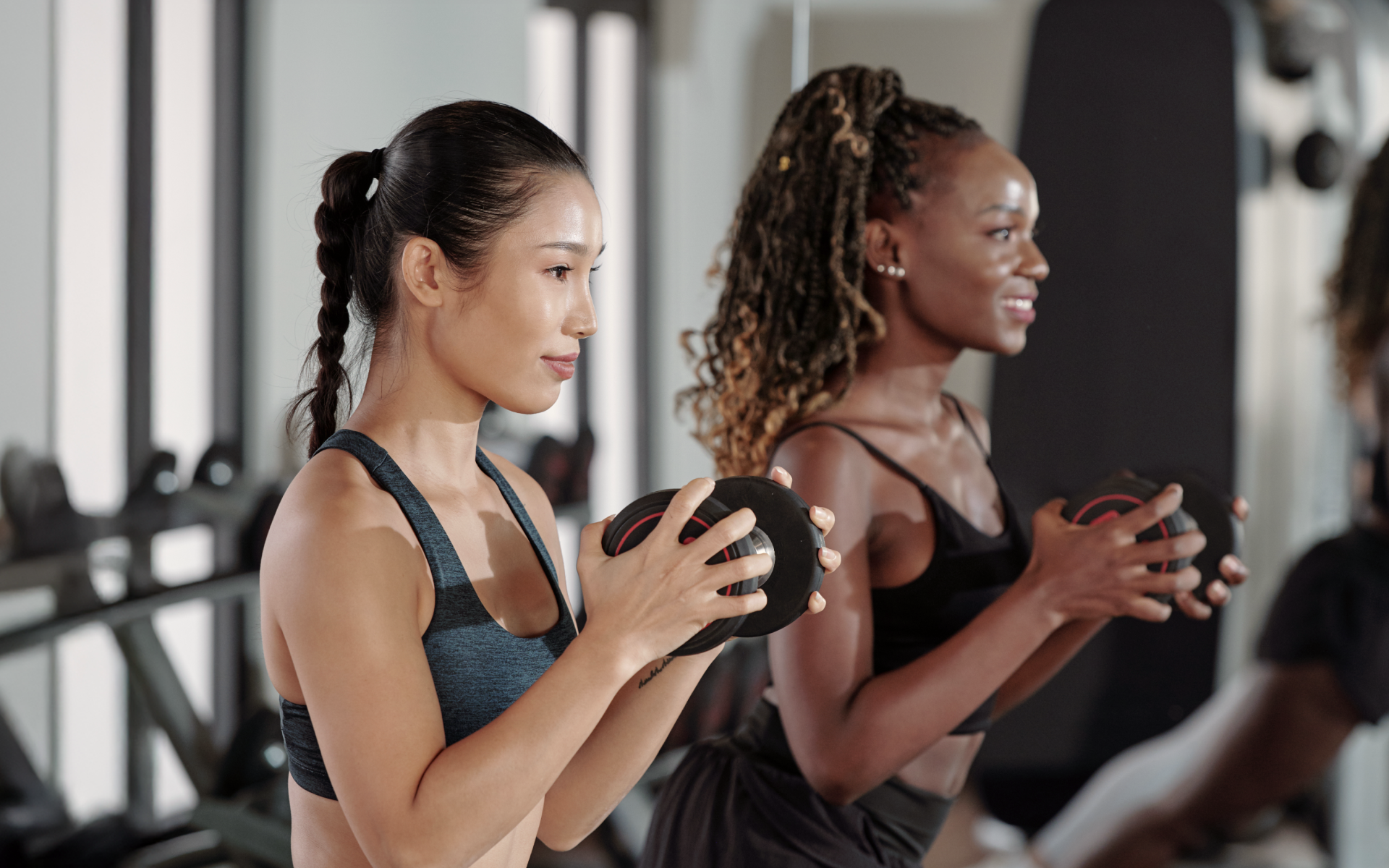Enjoyment is an underrated part of any workout routine, but when you’re trying to lose weight it’s especially important. After all, if you’re not enjoying yourself, you’re not likely to stick with it. This is why dance is such a great workout for weight loss. It’s fun, it’s social, and it’s a great way to get your heart rate up. There are tons of different styles of dance to choose from, so you should be able to find one that suits your personality. And what if you’re not the best dancer? No problem! As long as you’re moving and having a good time, you’ll be burning calories. Aside from the enjoyment aspect, there are many science-backed benefits of dancing for weight loss (1) which we’ll explore in this article. We’ll also give you insights from experts on how to get started and some tips on how to make the most of your dance workouts. Let’s get started!
Get your personalized
meal plan!
What Exactly Are Dancing Workouts?
If you’ve been saving your best dance moves for a night out, you might be surprised to know that you can actually burn a lot of calories just by dancing at home, in the park, or even at work (if your boss is okay with it).
Dancing workouts are simply any type of dancing that is done for the purposes of exercise and weight loss. That means that you don’t have to be a professional dancer or take dance classes to get the benefits. Just put on some music that you enjoy and start moving!
A popular misconception is that you need to do a high-intensity workout like Zumba or boot camp in order to lose weight. But the truth is, there’s a variety of different types of dance workouts that can be effective for weight loss, and the intensity level is really up to you.
Here are some examples of both popular and lesser-known dancing workouts that can help you slim down:
- Zumba: Zumba is a Latin-inspired dance fitness class that is suitable for all fitness levels. It’s a great cardio workout, and you can burn up to 600 calories in one hour.
- Salsa: Salsa is a fun, social dance that is often done in couples. It’s a great workout for your legs, core, and arms, and you can burn up to 500 calories per hour.
- Belly dancing: Belly dancing is a sensual and graceful dance that is often performed to Middle Eastern music. It’s a great workout for your core muscles, and you can tone your ab muscles while burning up to 400 calories per hour.
- Hip-hop: Hip-hop is a high-energy dance style that is synonymous with urban culture. It’s a great cardio workout, and you get a serious endorphin rush from all the jumping and moving.
- Afrobeats: In for a more recent trend? Afrobeats is a genre of music that originates from Africa, and the accompanying dance is high-energy and fun. While it has a bit of a learning curve, once you get the hang of it, you can burn up to 400 calories per hour.
- Ballet: Ballet might not be the first thing that comes to mind when you think of a workout, but it actually offers a lot of benefits. It’s a great way to improve your posture, flexibility, and balance, and you can burn up to 400 calories per hour.
There are endless variations when it comes to dancing for weight loss, so there’s sure to be a style that you enjoy.
Read More: Dancing Workouts At Home: Do They Really Work?
Does Dancing For Weight Loss Work?
Now that we’ve explored some of the different types of dance workouts you might be wondering if they’re actually effective for weight loss. The short answer is yes!
Dancing is a great workout for weight loss because it’s a form of aerobic exercise, just like running or cycling. Aerobic exercise is any type of activity that gets your heart rate up and makes you breathe harder, and it’s a crucial component of any weight loss program.
How many calories you burn while dancing depends on a few factors, including your weight, intensity level, and duration. To calculate the number of calories burned while dancing, we use the MET value (Metabolic Equivalent of Task – this is the amount of energy you expend while doing a specific activity (6)). Other factors included in the calculation are your weight in kilograms and the duration in minutes.
The estimates below for 30-minute dance sessions for a person who weighs 180 lbs are:
- Zumba: 377 calories
- Ballet: 214 calories
- Ballroom dancing: 141 calories
- Break dancing: 253 calories
- Hip-hop dancing: 249 calories
- Salsa dancing: 171 calories
- Swing dancing: 249 calories
What Else Can Dancing Do For You?
In addition to being a great workout for weight loss, dancing has many other benefits. Like most forms of aerobic exercise, dancing offers:
Increased Stamina
Stamina refers to your body’s ability to sustain physical activity over a period of time. When you dance regularly, your heart and lungs become more efficient at delivering oxygen to your muscles, which gives you more stamina. This translates to being able to do other activities, like running or playing sports, for longer periods of time without getting as tired.
Improved Cardiovascular Health
Dancing is a great way to improve your cardiovascular health. When you dance, your heart beats faster and pumps more blood through your body. This helps to lower your blood pressure and improve your cholesterol levels. Regular dancing can also help to reduce your risk of heart disease (3).
Stronger Bones
Dancing is a weight-bearing exercise, which means it helps to build and maintain strong bones (2). This is especially important for postmenopausal women, who are at a higher risk for osteoporosis.
Improved Mobility And Flexibility
Mobility refers to your ability to move freely, and flexibility is the range of motion in your joints. As we age, both of these things tend to decline. They may also decline due to a sedentary lifestyle or certain medical conditions. Dancing can help to improve your mobility and flexibility, and it may also help to prevent falls (1).
Reduced Stress Levels
Dancing is a great way to reduce stress and improve your mood. Exercise releases endorphins, which have mood-boosting effects (5). Dancing also gives you a chance to socialize and express yourself creatively. These things can help to reduce stress and improve your overall mental health (3).
Looking for a way to break the vicious cycle of weight loss and tone up all the jiggly parts? Watch the extra pounds fly off and your muscles firm up with the BetterMe app!
Stronger Immune System
Dancing can also help to boost your immune system. Exercise increases your body’s production of white blood cells, which fight off infection (4). This means that you’re less likely to get sick, and if you do get sick, you’ll recover more quickly.
Better Sleep
Dancing can help you sleep better. Exercise improves the quality of your sleep by helping you to fall asleep more quickly and stay asleep for longer periods of time. This is because exercise helps to regulate your body’s sleep-wake cycle.
How To Get Started With Dancing Workouts
Now that you know all of the amazing things that dancing can do for you, it’s time to get started. If you’re new to dancing, or if you’re not very coordinated, don’t worry. There are plenty of ways to get started, and you don’t need to be a professional dancer to reap the benefits.
Take A Beginner’s Class
One of the best ways to get started with dancing is to take a beginner’s class. This will give you a chance to learn the basics and get a feel for different types of dances. Most dance studios offer beginner’s classes for a variety of dance styles.
Download An App For At-Home Dance Workouts
If you’re not ready to take a class, or if you don’t have access to a dance studio, you can also try at-home dance workouts. There are a number of apps that offer dance workouts for all levels, and you can even find some that are specifically designed for beginners.
Dance Around Your House
You don’t need a formal workout to start dancing. Just put on some music and start moving. You can dance around your living room, in your kitchen, or even in your backyard. Just make sure to wear comfortable shoes and clothes that you can move around in.
Bear in mind that duration and intensity are key when you’re starting out. Start with shorter workouts that are less intense, and gradually increase the time and difficulty as you get more comfortable. You should spend at least 30 minutes dancing 3-5 times per week to see results.
As for intensity, you should work up a sweat, but you shouldn’t be so out of breath that you can’t hold a conversation. If you can talk while you’re dancing, you’re probably not working hard enough. But if you can’t say more than a few words without pausing to catch your breath, you’re probably working too hard.
Read More: Dancing Workouts To Lose Weight: Do They Really Work?
Safety Considerations For Dance Workouts
Depending on which type of dance you’re doing, there may be some safety considerations to keep in mind.
Impact On Your Joints
Dances like tap or hip-hop that involve a lot of jumping can be hard on your joints. If you have joint problems, you may want to avoid these types of dances. Even without pre-existing conditions, it’s important to listen to your body and take breaks if you start to feel pain. Rest days are crucial to keep repetitive stress injuries at bay.
Heat-Related Injuries
If you’re dancing in a hot environment, like a club or a studio with poor ventilation, you’re at risk for heat-related injuries. To avoid these, drink plenty of water and take breaks often to cool down. Dress appropriately, if in the summer you’ll want to wear shorts and a tank top, and in the winter, layers that you can take off as necessary.
Risk Of Slips And Falls
Dancing can be a high-impact activity, which means there’s a risk of slips and falls. Wear shoes that have good traction, and be careful when dancing on slippery surfaces. If you’re dancing in a studio, make sure the floor is clean and dry. And if at home, clear away any clutter that could cause you to trip.
Warm Up & Cool Down
Just like other forms of exercise, it’s important to warm up and cool down when you’re dancing (7). A good warm-up will help to increase your heart rate and prepare your muscles for the workout. A cool-down will help to reduce your heart rate and prevent post-workout stiffness and soreness.
To warm up, start with some light cardio like jogging in place or jumping jacks. Then do some dynamic stretches, like leg swings or arm circles.
To cool down, start with some light cardio to gradually reduce your heart rate. Then do some static stretches, holding each stretch for 30 seconds or more.
If you tend to let yourself off the hook, raise the white flag when things get tougher than you expected, send yourself on an unconscious binge-eating trip – BetterMe app is here to help you leave all of these sabotaging habits in the past!
Dietary Considerations For Dance Workouts
Eating a healthy diet is important for anyone, but it’s especially important if you’re doing a lot of physical activity. A healthy diet will help you to have more energy, build muscle, and recover from your workouts.
There are a few specific things to keep in mind when you’re eating for dance workouts.
First, make sure to eat enough protein. Protein is essential for muscle growth and repair, so you’ll need to make sure you’re getting enough if you want to see results from your workouts. A good rule of thumb is to eat 0.36 grams of protein per pound of body weight. So, if you weigh 150 pounds, you should be eating 54 grams of protein per day.
Second, eat plenty of complex carbohydrates. Complex carbs are a slow-burning source of energy that will help you to sustain your energy levels throughout your workout. Good sources of complex carbs include whole-grain breads and pastas, oatmeal, quinoa, and sweet potatoes.
Third, you want to create a calorie deficit for weight loss. This means eating fewer calories than you’re burning. To do this, you’ll need to track your calorie intake and make sure you’re eating less than you’re burning. There are a number of ways to do this, including using a food journal or an app. Portion control using smaller plates can also help.
Finally, stay hydrated. It’s important to drink plenty of water throughout the day, but it’s especially important to drink up before and after your workout. A good rule of thumb is to drink 8 ounces of water about 30 minutes before you exercise, and then 8 ounces for each 20 minutes of exercise.
So, if you’re working out for an hour, you should drink 16 ounces of water before your workout, and then 32 ounces during and after your workout.
Final Thoughts On Dancing Workouts
Dancing is a great way to get your heart pumping and your body moving. It’s also a fun way to relieve stress, boost your mood, and meet new people. Whether you’re a beginner or a seasoned pro, there’s a dance style out there for you. Now, put on your dancing shoes and get moving!
DISCLAIMER:
This article is intended for general informational purposes only and does not serve to address individual circumstances. It is not a substitute for professional advice or help and should not be relied on for making any kind of decision-making. Any action taken as a direct or indirect result of the information in this article is entirely at your own risk and is your sole responsibility.
BetterMe, its content staff, and its medical advisors accept no responsibility for inaccuracies, errors, misstatements, inconsistencies, or omissions and specifically disclaim any liability, loss or risk, personal, professional or otherwise, which may be incurred as a consequence, directly or indirectly, of the use and/or application of any content.
You should always seek the advice of your physician or other qualified health provider with any questions you may have regarding a medical condition or your specific situation. Never disregard professional medical advice or delay seeking it because of BetterMe content. If you suspect or think you may have a medical emergency, call your doctor.
SOURCES:
- Dance – health benefits (2022, betterhealth.vic.gov.au)
- Dancing for bone health: a 3-year longitudinal study of bone mineral accrual across puberty in female non-elite dancers and controls (2006, nih.gov)
- Dance your way to better heart health? (2022, harvard.edu)
- Exercise and immunity (2022, medlineplus.gov)
- Endorphins and exercise (1984, nih.gov)
- Metabolic equivalents (METS) in exercise testing, exercise prescription, and evaluation of functional capacity (1990, nih.gov)
- Why Warming Up and Cooling Down is Important (n.d., tricitymed,org)

